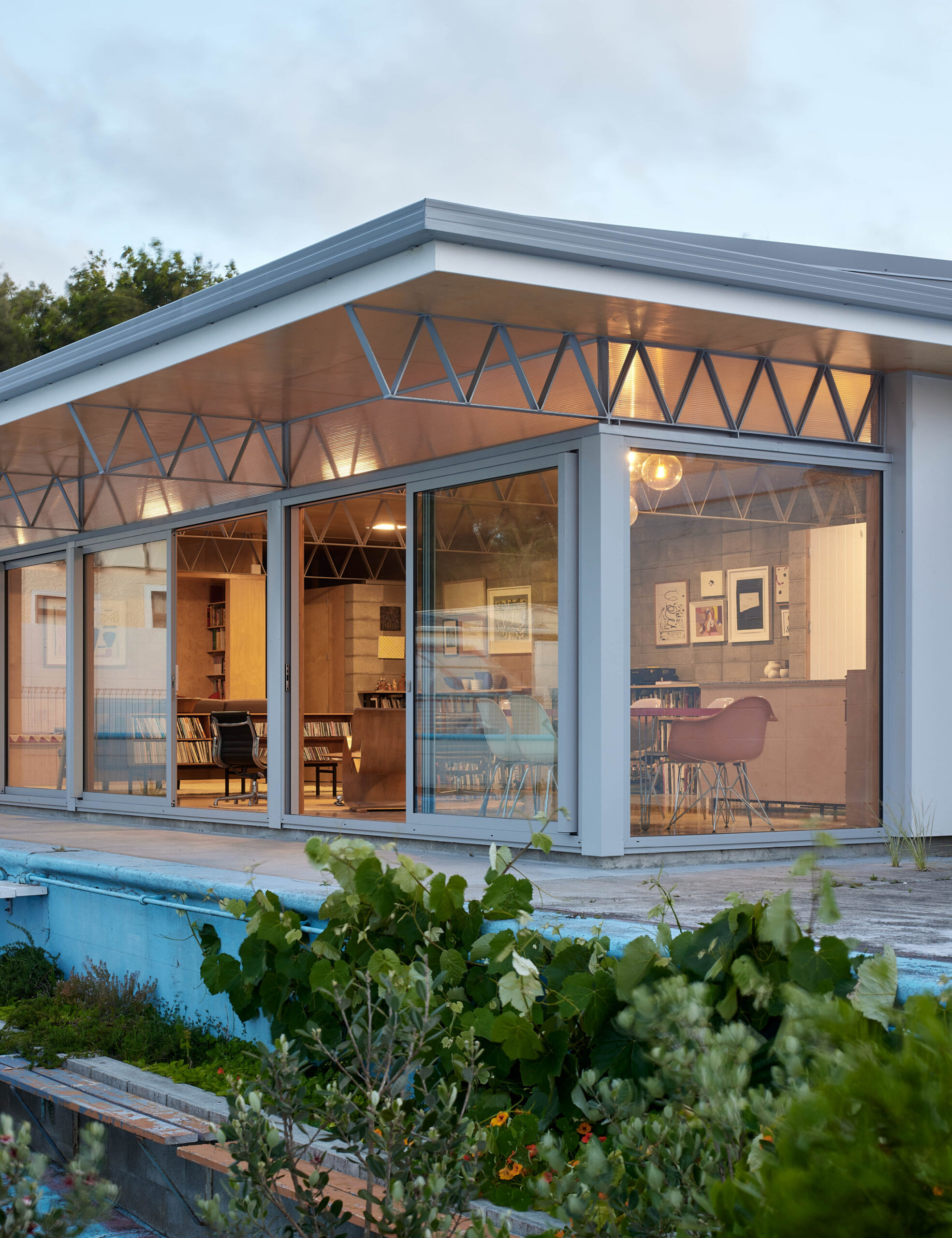Whanganui, on the west coast of New Zealand’s north island, is said to be a neglected corner of the country. And the Whanganui suburb of Gonville is perhaps one of the more dilapidated areas of the city.
But Frank Stark, who runs the Gonville Centre for Urban Research (GCUR), has embarked on a mission to revitalise the suburb — starting with his family’s home.
The old Gonville swimming pool complex was closed down in 2006, while the adjacent town hall and fire station were also left abandoned until local potter Ross Mitchell-Anyon purchased the entire site in 2009 in an effort to ensure it avoided demolition.
It remained run-down over the years, before Frank and his partner Emma, who works for the Whanganui District Council, bought the complex from Ross in 2019. After subdividing the wider site and selling the fire station, they enlisted Ross’ son — Patchwork architect Ben Mitchell-Anyon — to reimagine the pool as a home for them and their young daughter Peggy.
Though initial designs looked to retain all of the buildings on site, the original 1970s concrete changing room sheds were found to be structurally unsound. So, Ben and his team partly demolished the sheds to make way for a contemporary family dwelling that still references the materiality of the existing buildings.
In a nod to the location, the new house was designed on a grid with various zones separated into ‘lanes’ by roof trusses, which loosely reference the typical triangular flags found at pools.
‘It’s a very simple and modest floor plan but the house maintains a sense of generosity that I’m really proud of,’ Ben says. ‘The new house is a warm, dry and comfortable place to live, and has revitalised a space that was previously unused, and becoming increasingly unsafe.’
One of the changing rooms was also repurposed as the GCUR library, while Frank and his team are currently restoring the original ticket office building as an office and retail space, and one of the other changing room blocks into an apartment for visitors to stay.
As the entrance — a trio of beach box-style pavilions — remained unchanged, the property appears much the same at street view as it always has. But beyond this initial entryway, it would be virtually unrecognisable if not for the structure of the original swimming pools.
The smaller pool was retained and restored to its initial purpose, while the large pool — which was too much of an undertaking to repair completely for swimming — has been cleverly converted into a sunken garden.
‘The garden being in the pool means that the view from the house is into the canopy of the larger trees, looking down on the garden beds,’ Ben explains.
‘It’s been great to see the garden get established even over the short period of time since it’s been planted. We’re looking forward to seeing the larger trees grow up and change the feeling of the site.’
But the pool was not completely buried — its original outline and fittings such as pipework and ladders have been preserved.
‘We love the house’s newness, but also like it when it is mistaken by visitors and fence-climbers for swimming club rooms or a pool-side cafe,’ Frank says of his new home. ‘It is a great space to live in, work in, play in.
‘Because of its history and new uses, it is neither fully private nor completely public, and we want to experience the shifts in that balance which lie ahead … the Gonville project is continuing.’

